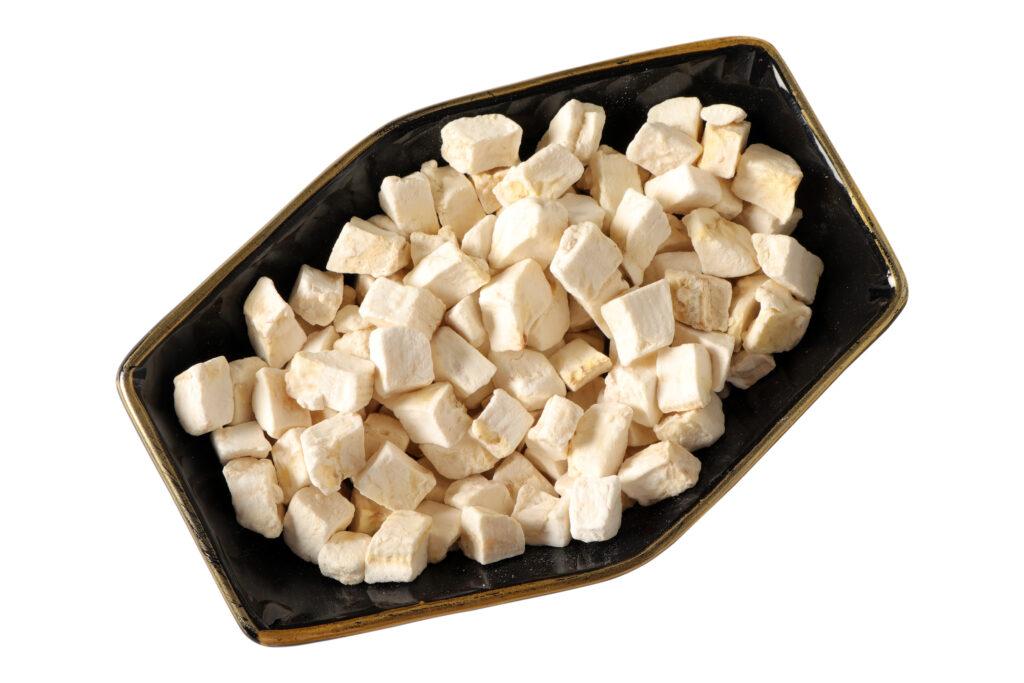

· By Amit Digi
Water is present in food. When the meal is heated, the moisture evaporates, the water converts to gas, and the food dehydrates. In your house, a dehydrator will remove 90% of the water from the food. If you freeze the food first and lower the ambient pressure, the ice crystals will skip the ‘changing into water’ stage and instead become gas, a process known as sublimation. This ‘freeze-drying’ technology may eliminate 99% of the water content of the food.
Furthermore, the less heat employed in the procedure, the less nutrients degrade. Dehydrating food, for example, depletes vitamin C, but freeze-drying does not; you simply cannot lessen the pressure when dehydrating.
“Why would I switch from the more typical way of hydrating?” you may ask.”. The short and simple explanation is that it all comes down to nutrition. Simply said, freeze-dried food maintains far more of its inherent quality. As a result, all nutrients are neatly packed within until ready to ingest.
The shelf life of freeze-dried food is included in the lengthier and more complex response. Food rots due to the presence of water and oxygen. With a lifespan of up to 24 years, you won’t be left high and dry or up a creek without a paddle. Your freeze-dried food will keep for as long as you keep it in an airtight bag. When food is exposed to air, oxygen begins to destroy it.
Consumer attitudes are shifting, and more individuals are seeking nutrition from actual, high-quality food sources with intelligible labelling. Because freeze-dried meals are lightly processed, they can contain clean components that are free of synthetic, artificial, and highly processed elements.
Freeze-dried fruits and vegetables are also actual fruits and vegetables, allowing businesses to make nutritional claims. The attractiveness of confirmed, whole food serving claims from freeze-dried fruits and vegetables stems from consumers’ need for nourishment from authentic and understandable sources. Reach out to on-the-go millennials with complete meal portions in convenient delivery options such as bars or nibbles.
Freeze drying keeps nutritional content better than conventional drying processes, satisfying customers’ quest for whole-food nutrition. The method also retains the original raw material’s colour and form, ensuring customers are eating real fruits and vegetables. The robust flavour and scent of freeze-dried foods closely mimic the raw material profile.
Another advantage of freeze-drying is the flexibility to tailor it to specific demands and project objectives. Freeze-dried products can be sliced or crushed into a wide range of sizes and shapes, from entire fruits and vegetables to tiny powders. The finished product may be readily combined into any blend or recipe to create a flavour profile that is entirely unique to your final product.
Food processors with customization and mixing capabilities may combine actual fruits and vegetables into a wide range of applications. Breakfast applications such as hot and cold cereals, retail-ready or ready-to-eat snacks, and beverage applications such as smoothies or whole fruit pieces added to drinks are all growing areas of freeze-dried applications.
The shelf life of any particular product is closely related to its moisture content. The removal of water by the freeze-drying process eliminates the possibility of bacterial development. Moisture percentage varies by product, but the average for freeze-dried items is roughly 3%. The actual shelf life of any specific freeze-dried product is determined by packaging, storage temperature, and the product itself.
The shelf life of most dehydrated items, such as dried fruits and vegetables, powders, and TVP (soy protein), is typically 15-20 years. Honey, salt, sugar, hard wheat, and oats have a 30-year shelf life – occasionally longer. Freeze-dried fruits and vegetables, ready-to-eat meals, and genuine meats have a longer average shelf life of 25-30 years. Freeze-dried food may be stored at a variety of temperatures without affecting the food or packaging; the food remains fresh for many years.
1
gBqsPxAZ on
1
gBqsPxAZ on
Your cart is currently empty.
